Augmented reality technology, which is a new technology that integrates real world information and virtual world information "seamlessly". It is an entity information (visual information, sound, etc.) that is difficult to experience in a certain time and space of the real world. Taste, touch, etc., through computer and other science and technology, simulation and then superimposition, the virtual information is applied to the real world, perceived by human senses, thus achieving a sensory experience beyond reality. The real environment and virtual objects are superimposed in real time on the same picture or space.
Augmented reality technology not only displays the information of the real world, but also displays the virtual information at the same time, and the two kinds of information complement each other and superimpose. In visual augmented reality, users can use the helmet display to combine the real world with computer graphics to see the real world around it.
Augmented reality technology includes new technologies and new methods such as multimedia, 3D modeling, real-time video display and control, multi-sensor fusion, real-time tracking and registration, and scene fusion. Augmented reality provides information that is different from what humans can perceive in general.
The AR system has three prominent features: 1 real-world and virtual world information integration; 2 real-time interactivity; 3 is to add positioning virtual objects in the three-dimensional scale space. AR technology can be widely applied to military, medical, construction, education, engineering, film and television, entertainment and other fields.
AR technology is widely used not only in VR technology applications, such as cutting-edge weapons, aircraft development and development, data model visualization, virtual training, entertainment and art, but also because of its ability to perform in real-world environments. Enhance display output characteristics, with more obvious advantages than VR technology in medical research and anatomical training, precision instrument manufacturing and maintenance, military aircraft navigation, engineering design and remote robot control.

AR in life
* Medical field: Doctors can use augmented reality technology to easily locate the surgical site.
* Military field: Forces can use augmented reality technology to identify the location and obtain important military data such as geographic data in real time.
* Monument restoration and digital cultural heritage protection: Cultural monuments are provided to visitors in augmented reality. Users can not only see the textual interpretation of the monuments through HMD, but also the virtual reconstruction of the defective parts of the site.
* Industrial maintenance field: Display a variety of auxiliary information to users through helmet-mounted displays, including the panel of virtual instruments, the internal structure of the equipment being repaired, and the parts drawings of the equipment being repaired.
* Network video communication field: The system uses augmented reality and face tracking technology to superimpose some virtual objects such as hats and glasses on the caller's face in real time during the call, which greatly improves the interest of video dialogue.
* TV broadcast field: Augmented reality technology can superimpose auxiliary information into the picture in real time when broadcasting sports games, so that viewers can get more information.
* Entertainment, games: Augmented reality games allow players in different locations around the world to enter a real natural scene and play online in the form of virtual substitutes.
* Tourism and exhibition areas: While browsing and visiting, people will receive relevant materials passing through the building through augmented reality technology and watch relevant data of the exhibits.
* Municipal construction planning: Augmented reality technology is used to superimpose planning effects in real scenes to directly obtain planning effects.
The more authoritative augmented reality scholar in China is Professor Wang Yongtian from the Department of Optoelectronic Engineering, Beijing Institute of Technology.
For the first time in China, this technology has been applied to ordinary life. It is a free software called XINGWIKI (augmented reality version) released on Apple's AppStore.
Notepads, people hope to get the same media and information in different locations in the future, and get it across different devices - from PCs to mobile phones, from projectors to head-mounted displays. How to provide users with a consistent and convenient way to interact with the information and media that are important to them. You can understand the following diagram. The interface you can operate is no longer that. A small computer screen, but extended to a larger space, and you can freely record the inspiration that you suddenly burst out at some point in the simplest way.
First, the origin, concept and application field of virtual reality and augmented reality technology(1) The origin of virtual reality and augmented reality technology
In 2016, it was called “the first year of virtual reality†by the industry. Some people may mistake this technology for a new technology that has been developed in recent years. In fact, Virtual Reality (VR) technology originated in the United States. In 1965, Ivan Sutherland, the father of virtual reality, published an article called "The Ultimate" at the International Conference on Information Processing (IFIP). In the paper of "Show", the basic idea of ​​virtual reality system including interactive graphic display, force feedback device and sound prompt is proposed for the first time. It describes the "virtual reality" that we are familiar with now. As early as the early stage of virtual reality technology research, Su Zelan realized a three-dimensional display in his "Sword of Damocles" system. Augmented Reality (AR) refers to the provision of informative and entertaining coverage on top of the real environment. It was introduced by Su Zelan in research on head-mounted displays.
In 1966, the Lincoln Laboratory of the Massachusetts Institute of Technology (MIT) officially began the development of head-mounted displays (HMDs). Shortly after the prototype of the first head-mounted display was completed, the developer added a force feedback device that simulates power and touch to the system. In 1970, the first fully functional head-mounted display system emerged. In 1989, Varon's Jaron Lanier proposed the use of "Virtual Reality" to represent the term virtual reality, and developed virtual reality technology into commodities, which promoted the development and application of virtual reality technology. Virtual reality technology emerged in the 1990s.
After 2000, virtual reality technology introduced advanced technologies such as XML and JAVA in the integration and development, and applied powerful 3D computing power and interactive technology to improve rendering quality and transmission speed, and entered a new era of development. Virtual reality technology is the product of economic and social productivity development and has broad application prospects. In February 2008, the National Academy of Engineering (NAE) published a report entitled “14 Major Challenges in Engineering in the 21st Centuryâ€. Virtual reality technology is one of them, along with new energy, clean water, new drugs and other technologies. In order to gain the advantages of virtual reality technology, the governments of the United States, Britain, Japan and other large companies have invested heavily in research and development in this field.
The study of virtual reality technology in China started in the early 1990s. With the rapid development of computer graphics and computer system engineering, virtual reality technology has received considerable attention. The "Thirteenth Five-Year Plan for National Economic and Social Development of the People's Republic of China" issued by the National People's Congress on March 17, 2016 states: "Developing advanced semiconductors, robots, additive manufacturing, intelligent systems, and next-generation aviation." Equipment, space technology integrated service system, intelligent transportation, precision medical treatment, high-efficiency energy storage and distributed energy systems, smart materials, energy-efficient environmental protection, virtual reality and interactive film and television, and other emerging frontier innovations and industrialization, forming a number of new growth points "Virtual reality" is among them, and at the same time, the entrepreneurial team dedicated to virtual reality is exploding. Some people also put virtual reality and augmented reality technology into the eight important emerging core technologies (the eight emerging core technologies are shown in Figure 1) when they look forward to the development of important emerging core technologies in 2020.
According to the “China VR User Behavior Research Report for the First Half of 2016†jointly released by the National Advertising Research Institute and other organizations, the number of potential users of domestic virtual reality reached 450 million in the first half of 2016, the number of shallow users was about 27 million, and the number of heavy users was 2.37 million. It is expected that the domestic virtual reality market will usher in explosive growth. The virtual reality user group is mainly after 80s and 90s, and after 85 years between 26 and 30 years old, the proportion is 28.4%, which is related to the characteristics of young people who are willing to touch new things. In addition, the user group has a tendency to spread from the economically developed cities such as Kitakami to the country.

(2) Concepts, features and application areas of virtual reality and augmented reality
Virtual reality technology
Virtual reality is an immersive interactive environment based on multimedia computer technology, sensing technology and simulation technology. Specifically, computer technology is used to generate a virtual environment of a specific range of realistic visual, auditory, and tactile integration. The user interacts with and interacts with objects in the virtual environment in a natural way with the necessary equipment. Equivalent to the feelings and experiences of the real environment.
Virtual reality has 3I characteristics, namely Immersion, InteracTIon, and ImaginaTIon. It is a highly integrated science and technology field. The combination of virtual reality and artificial intelligence (AI) technology and other related technologies will enable it to have both Intelligent and EvoluTIon features. The head-mounted virtual reality device is shown in Figure 2.
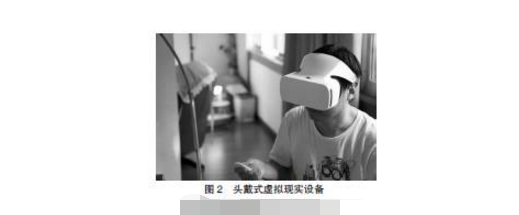
Virtual reality involves a wide range of disciplines and integrates many related technologies. Virtual reality is one of the directions of future technological development. It can change the existing sense of space from the human sensory system. The existing industry chain of virtual reality can be roughly divided into several categories: hardware design and development, software design and development, resource design and development, and resource operation platform. Through the breakthrough of virtual reality key technologies and the drive of “virtual reality+â€, a large number of virtual reality application systems in industries and fields will be generated, bringing new developments to network and mobile terminal applications, which will promote the development of upgrading in many industries. .
Virtual reality can be used in defense military, aerospace, smart city, equipment manufacturing, education and training, medical health, business consumption, cultural entertainment, public safety, social life, leisure travel, live television and other fields. For example, on October 17, 2016, CCTV used virtual reality holography technology to broadcast the process of “Tiangong No.2†and “Shenzhou No.11†rendezvous and docking and jointly establishing a combination, using virtual tracking technology to make “Tiangong No.2†From the big screen, “drilled†out, through the scene change of the position, the audience can visually see the data and design details of “Tiangong No.2â€, so that the audience can fully understand the “Shenzhou No.11â€. “Tiangong No.2†and its internal structure and control panel, while the anchor Wenjing also “walked into†the “Tiangong No.2†experimental room, and introduced the internal structure information of “Tiangong No.2†to the audience one by one, with traditional news. Compared with the broadcast, the live video application virtual reality technology is more lively and lively, the visual impact is stronger, and the audience feels more intuitive.
2. Augmented reality technology
Augmented reality is an emerging technology developed on the basis of virtual reality. Augmented reality technology is based on computer-based display and interaction, network tracking and positioning technology, and superimposes the virtual information formed by the computer into the real scene in reality to supplement the real world and enhance people's visual, auditory and tactile aspects. The experience of the real world.
Augmented reality has three major characteristics, namely virtual and real combination, real-time interaction and three-dimensional registration.
Augmented reality has three presentation modes, which are divided into head-attached, hand-held, and spatial (TI) by distance from the eye to the left. Augmented reality smart glasses are shown in Figure 4.
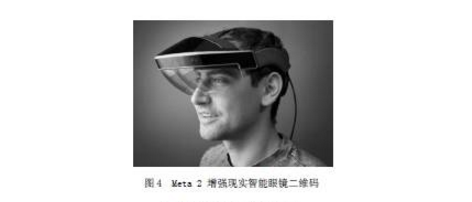
Augmented reality is used in a wide range of applications. For example, in the field of education, augmented reality can present holographic images, virtual experiments, virtual environments, etc. in the tourism industry. Augmented reality in tourism can help tourists to enjoy the scenic spots themselves, and explain the scenic spots, development history and human landscapes in the form of virtual images. In the retail industry, augmented reality technology can achieve one-click try-on, and has great application space in online sales. Augmented reality has shown good application prospects in the fields of industry, medical, military, municipal, television, games, exhibitions and so on.
3. Mixed reality technology
Mixed Reality (MR) is a further development of virtual reality technology. By presenting virtual scene information in real scenes, an interactive feedback information loop is established between the real world, the virtual world and users to enhance users. The realism of the experience. The hybrid reality technology combines the advantages of virtual reality technology and augmented reality technology to better represent augmented reality technology.
According to Steve Mann's theory, intelligent hardware will eventually transition from augmented reality technology to mixed reality technology. The difference between hybrid reality technology and augmented reality technology is that the mixed reality technology allows you to see the reality that is invisible to the naked eye through a camera. The augmented reality technology only superimposes the virtual environment regardless of the reality itself. The effect of mixed reality technology is shown in Figure 6.

4. Expanding reality
Expander Reality (ER) is the integration of human Internet and Internet of Things. It is an advanced stage of virtual reality development. Virtual reality develops to the stage of expanding reality. The boundaries between reality and virtual are erased. It is difficult for people to distinguish themselves from life. In the virtual world or the real world. The extended reality scenario is shown in Figure 8.

5. The difference between virtual reality, augmented reality, mixed reality, and extended reality
The difference between virtual reality, augmented reality, mixed reality and extended reality is that the main battlefield of virtual reality is the "virtual world". People use virtual reality devices to explore the virtual world established by human factors, and pursue immersion. Virtual reality is Pure virtual digital image; the main battlefield of augmented reality is the "real world". People use the virtual information generated by augmented reality equipment to enhance the ability to explore the real world. It has strong mobile properties. Augmented reality is virtual digital image plus naked eye reality. Mixed reality is digital reality plus virtual digital image. Conceptually, mixed reality is closer to augmented reality. It is half of reality and half virtual image; expanding reality is the integration of human network and Internet of Things, which is the development of virtual reality. In the advanced stage, the boundaries between reality and virtual will be erased.
Second, the specific application of virtual reality and augmented reality technology in teachingThe application of virtual reality and augmented reality technology in teaching has great potential and broad prospects. It is mainly reflected in the use of virtual reality and augmented reality technology to stimulate learning motivation, create learning situations, enhance learning experience, feel psychological immersion, cross time and space boundaries, and dynamic interaction. Cross-border and cross-border knowledge integration and many other advantages. The application of virtual reality and augmented reality technology can provide educators with new teaching tools, and at the same time, stimulate students' interest in learning new knowledge, and let students spark a spark of innovation in the hands-on experience. Therefore, the application of virtual reality and augmented reality technology to the education industry is a new leap in the development of educational technology. It creates an environment of independent learning, which evolves from the traditional “teaching and learning†learning style to students through a new information environment and Tools to acquire new learning methods of knowledge and skills, in line with the new round of teaching reform education philosophy, contribute to the cultivation of students' core literacy. There are many kinds of virtual reality and augmented reality devices. Here are the specific applications of various devices in teaching.
(1) Application of head-mounted virtual reality and augmented reality equipment in teaching
Head-mounted virtual reality devices generally include head-mounted displays, position trackers, data gloves, and other devices, and are divided into mobile virtual reality helmets and split virtual reality helmets. There are more than 100 kinds of virtual reality helmet products from Facebook, Google, Microsoft, Samsung and other companies. There are more than 100 kinds of virtual reality helmet products such as micro-vision cool, ant vision, storm mirror, ZTE, LeTV, Huawei and Xiaomi. Combining domestic and foreign research reports and current virtual reality education practices, virtual reality and augmented reality technologies can be used in biology, physics, chemistry, engineering technology, process processing, flight driving, language, history, human geography, cultural practices, etc. application.
Students use head-mounted virtual reality devices to experience the immersive feeling of being in a real situation. They can give students a great real experience, make people feel like they are there, and make the content in the book touchable and interactive. Perception. For example, when the geography lectures about the interstellar operation of space, students can't travel in space in real life. If they wear a virtual reality device, they can let students observe the trajectories of planets, stars and satellites from various angles. Observe the shape and internal structure of each planet, and even land on Mars or the Moon for "field" inspections and experience interstellar tours. The virtual reality headset is shown in Figure 9.
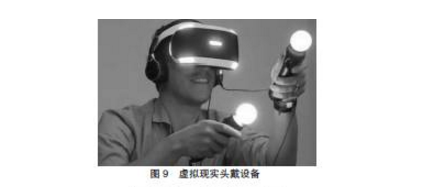
In 2016, Microvision Cool launched a virtual reality classroom teaching system with a certain representativeness in China. The teaching system consists of a teacher's tablet host, multiple sets of virtual reality glasses for students, and an IES education software system. The system has one-button control, one-button statistics and one-button printing. Teachers can control the teaching content of students' virtual reality glasses at any time according to the progress of teaching. Microvision has launched the “VR Classroom 1 Project†program, which spans many provinces and cities across the country. The scenario of the virtual reality demonstration teaching observation course presented in the Gaoxin Primary School of Yulin City, Shaanxi Province is shown in Figure 11.
Virtual reality brings students from reality to virtual world. Virtual reality technology makes students become an astronaut, allowing students to see many things that they can't usually see. Compared with traditional classrooms, virtual reality classrooms allow students to get along. The feeling of the situation is conducive to students' imagination, and can present the content of the lecture more intuitively and improve the enthusiasm of students.
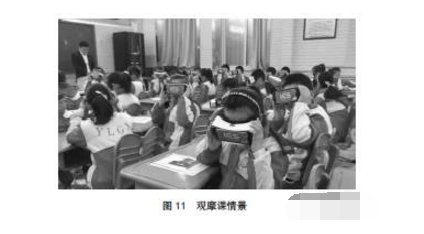
Head-mounted augmented reality devices, including Microsoft HoloLens, MagicLeap, and Meta 2, have a cool experience that allows users to watch virtual TVs anywhere, even to project images on the wall, on the phone screen, or in front of them. In the air, these augmented reality device applications will replace all "displays and screens". Taking the Ho-loLens head-mounted augmented reality device as an example (as shown in Figure 12), its main hardware consists of a holographic processing unit (CPU + GPU + HPU), an optical projection system (Lcos micro projector + light guide transparent holographic lens), The camera and sensor section (6 cameras + inertial sensor + ambient light sensor, etc.), storage section, and other components (headphone + microphone + battery + structure).
After using HoloLens, students can throw away their computers and mobile phones without using the keyboard, mouse and display screen. Hands can be operated in the air to complete all the operations on the computer and mobile phone, and the robot can be built in 3D. The mold design task is shown in Figure 13.
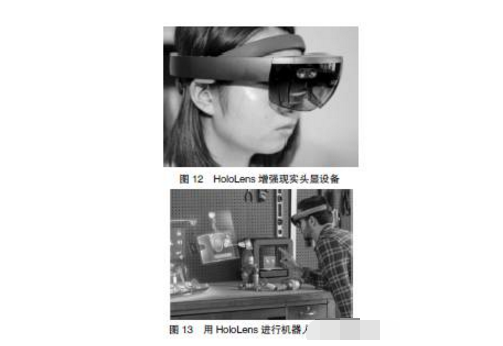
(2) Application of desktop virtual reality and augmented reality equipment in teaching
The representative product of desktop virtual reality and augmented reality equipment is the virtual reality education integrated machine of zSpace Company of the United States. The United States has been using it since 2013, and the zSpace Z300 is now the third generation product. According to the latest “New Generation Science Education Standards†in the United States, zSpace has developed courseware with multiple subjects from grades 2 to 12. The courseware is distributed among six softwares. Teachers can use the system platform to bring their own courseware to implement the teaching plan. Creatively develop new courseware independently. zSpace not only can be used as a teaching tool, but also provides a wealth of resources for students and teachers. Tens of thousands of students in more than 250 schools in primary, secondary and university schools in the United States are using zSpace STEAM lab courseware for learning. China's Yunshang Interactive Company introduced zSpace Z300 to China at the end of 2015. In April 2016, “Zhichuang Space†received 6 sets of this equipment for the promotion of Maker Education and STEAM Education. So far, more than 2,700 people have come to experience learning. .
The zSpaceZ300 covers life sciences, mathematics, physics, chemistry, history, geography, earth and space science, and art in elementary, middle, and high schools. The total number of courseware is more than 440. The platform also provides a courseware resource development system. Teachers can import 3D model files in the form of stl, obj, etc. into the system as needed. At the same time, text, pictures, sound and video files can be added. Teachers can modify and develop independently like PPT courseware. A courseware resource that can run on the Z300 platform. There are two ways to use the Z300 platform: one is to wear 3D glasses (including tracking and non-tracking glasses), the person wearing the tracking glasses is operated with a laser pointer, and the other people wearing non-tracking glasses can see the 3D virtual reality effect; The other is to add a holographic camera and tablet (or projection) to project the 3D image of the Z300 device onto the tablet to present the augmented reality of the naked eye 3D.
(III) Application of handheld virtual reality and augmented reality equipment in teaching
Handheld augmented reality devices use a combination of mobile devices and APP software. APP has +AR, AR, 4D Book City, Magic Vision, Visual AR, Neo Photo, etc. In addition, there are a variety of augmented reality books with matching APP, such as "The robot ran out" "The experiment ran out "Dinosaur Hegemony Comes" This set of "Science Run Out" series of augmented reality popular science books include iRobotAR, iScienceAR, Dinosaur Hegemony, and many other apps. Their principles are all using mobile phone cameras to capture real-world images through mobile phones. Superimpose the form of avatar in the real world to realize the special display effect of augmented reality.
Some apps provide a wealth of educational resources, such as security education, popular science books, literacy cards, puzzle games, etc., which are especially suitable for children's education. There are two ways to use it: one is to use the mobile phone APP together with the matching paper books, use the mobile phone camera to scan the pictures on the book, and the demonstration effect shown in Figure 14 can be presented on the screen of the mobile phone; another method of use It is to use the APP to download the augmented reality resources and superimpose it with the outside world to present the demonstration effect as shown in Figure 15. Augmented reality effects are very realistic. Using these apps to learn, the learning process has a sense of realism, experience, and immersion, which enhances students' interest in learning and can achieve educational effects.
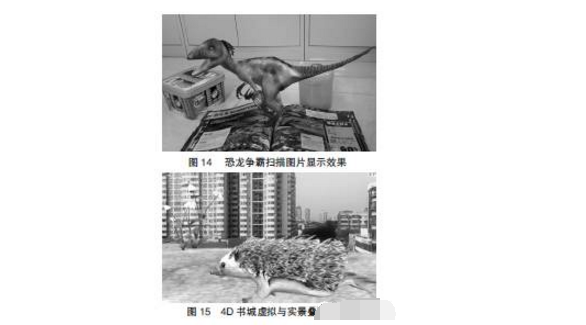
(1) Virtual reality and augmented reality technology provide favorable conditions for students to learn independently
Virtual reality and augmented reality teaching resources exist in various forms. According to the different devices used, teaching resources can be saved in network operation platforms, desktop devices, mobile devices and paper books. Students can adopt different places in different places. The device invokes virtual reality and augmented reality teaching resources to conduct independent learning anytime, anywhere. If students have some knowledge points in the classroom that cannot be mastered, they can re-learn again and increase the consolidation and understanding of knowledge. Sometimes students can't learn in the classroom for special reasons, but they can also make up after class, and they can also virtual reality and enhance. As a carrier, the reality equipment uses the "flip classroom" or "micro-course guidance" teaching mode to organize teaching, providing students with independent learning conditions, teachers can also free themselves from heavy repetitive explanations, and answer questions for students in a targeted manner. It contributes to the transformation of traditional teaching methods.
(2) Virtual reality and augmented reality technology provide students with more realistic scenarios
In traditional teaching classrooms, the transmission of knowledge is mainly presented in the form of text, pictures, sounds, animations and videos. In the case of more complicated situations, such as the three-dimensional geometry of mathematics, the celestial movement of geography, the magnetic lines and power lines of physics, the microscopic particle structure of chemistry class, the cell structure of biology class, etc., it is difficult for teachers to use these words. The expression is very clear, and because each student's understanding is different, the teaching effect will vary from person to person, and even the first time students learn this knowledge will get the feeling of "blind person touch". The use of virtual reality and augmented reality technology to organize teaching, the rendering of three-dimensional effects can make up for such shortcomings, can stereoscopically knowledge, present unimaginable things directly in three-dimensional form, so that students can intuitively feel the words can not be expressed The knowledge, the real situation can help students understand and remember the knowledge, and make the students' imagination more abundant.
(3) Virtual reality and augmented reality technology can improve students' interest in learning
Because virtual reality and augmented reality technology have the combined effect of visual, auditory and tactile sense, students have the real situation experience, the feeling of crossing time and space, and the feeling of dynamic interaction. They can immerse themselves in the book sea and let the book in the book. Content is touchable, interactive, and perceptible. The immersive experience and the natural and rich interactive experience not only greatly stimulate the learner's learning motivation, but also provide the learner with a large number of opportunities to observe, operate and cooperate with others to promote the cognitive processing process. And the process of knowledge construction is conducive to achieving deep understanding. The traditional way of learning makes many students feel dull and boring. In order to cope with the exam, they have to memorize, but many students will soon forget about it after the test, and use virtual reality and augmented reality technology to organize teaching. Learning methods and rich learning content can greatly enhance the fun of classroom teaching. The vivid scene will enhance students' memory and stimulate students' interest in learning. "Interest is the best teacher", and interest is also an inexhaustible motivation for students to learn new knowledge.
(4) Virtual reality and augmented reality technology applications can promote the equalization of quality resources
China has a vast territory, and the gap between the rich and the poor is large, and there is a situation in which the distribution of teaching resources is uneven. In economically developed areas, both software and hardware configuration, teaching staff and teaching resources are very rich, and the economical backward and geographically remote mountain village school students are difficult to achieve the most basic education. Governments at all levels and the competent education departments are vigorously promoting the balanced development of education and increasing investment in education. The application of virtual reality and augmented reality technology will be a golden key to solving the problem of imbalance between urban and rural educational resources, which will help alleviate the educational resources. Differentiating and expanding the sharing of high-quality resources can make educational resources no longer restricted to regions and schools, so that famous teachers in developed areas can enter the mountain village school through virtual reality and augmented reality classrooms, and can optimize the allocation of educational resources. Narrowing the gap between urban and rural areas and achieving education equity is also a better way to educate the poor.
Fourth, the problems of virtual reality and augmented reality technology in teaching applicationsAlthough the application of virtual reality and augmented reality technology in teaching can change traditional teaching methods, improve learning interest, and achieve balanced development of education, the development of virtual reality and augmented reality technology is still in the primary application stage, in technical bottlenecks, resource development, There are still many problems in teaching content and popularization.
(1) Dizziness in virtual reality device applications
When people use virtual reality devices, they will feel dizzy. From the hardware structure, because of the current technology, it is impossible to restore the real scene. Many users will have dizziness when using virtual reality products that cannot meet the requirements. The visual contrast in the realistic interface is large, the actual movement and the brain movement can not be matched normally, affecting the analysis and judgment of the brain on the presented image, thus producing a sense of dizziness; a considerable part of the content of the virtual reality device is from the PC version. After transplanting, the UI interface can't match the virtual reality device well. Different system processing can't achieve coordination and unification. The screen light line is too strong or too weak to be accepted by the user; the virtual reality device frame delay cannot keep up with people. The movement will have a slight delay, and the user will have a dizzy feeling when the senses are out of sync with the frame rate.
(2) Shortage of resources in teaching in virtual reality and augmented reality technology
At present, the virtual reality and augmented reality industries are just getting started, the software and hardware facilities are incomplete, the developers have insufficient technical strength, and many schools are not equipped with virtual reality and augmented reality equipment. Many teachers in primary and secondary schools have not been exposed to virtual reality and augmented reality. How to apply it in teaching, let alone how to develop virtual reality and augmented reality teaching resources. Therefore, there are few virtual reality resources developed for primary and secondary school teaching. The shortage of curriculum resources is the biggest bottleneck for the promotion of virtual reality and augmented reality in primary and secondary schools. However, with the rapid development of virtual reality and augmented reality technology, it is imperative to apply virtual reality and augmented reality technology to teaching. The application of virtual reality and augmented reality technology in teaching will inevitably bring about subversive changes in classroom teaching methods. .
(3) Design of virtual reality and augmented reality teaching platforms and resources
At present, many virtual reality education platforms only constitute virtual reality teaching based on a 3D video or virtual reality software game. Although the students are enjoying the virtual world, the classroom atmosphere is very active, the students interact, communicate and discuss very enthusiastically. On the surface, students get an immersive experience, but some of the knowledge points provided by the virtual reality education platform remain at the same time. In the real world, the monotony and boring content of textbooks has not been alleviated by the existence of software. The explanation of knowledge points has not become more vivid, interesting and targeted. This only pays attention to form and does not pay attention to content, teaching and learning. A disconnected virtual reality classroom can only be called a “pseudo-virtual reality classroomâ€.
(4) The high price of virtual reality and augmented reality equipment and the limitation of technical conditions lead to widespread difficulties
The company's early R&D costs are high and equipment sales are low, resulting in high sales prices for most virtual reality and augmented reality devices. Many schools are discouraged from funding problems and are unable to purchase expensive virtual reality and augmented reality devices. The popularization of virtual reality and augmented reality technology in schools is difficult. For example, when zSpace Z300 was introduced to China, the price of each unit was more than 200,000 yuan. Microsoft's HoloLens has not yet been listed. The pre-sale price announced is more than 20,000 yuan per unit. The price of ordinary head-mounted virtual reality equipment is also 2000-5000. Between the yuan. Most virtual reality software generally has problems such as strong language professionalism, poor versatility and poor usability. Due to hardware limitations, virtual reality software development is costly and has limited effectiveness. In addition, in the fields of new sensing applications, physical modeling methods, high-speed graphics and image processing, artificial intelligence, etc., there are many problems to be solved. The 3D modeling technology needs to be further improved, and the integration of big data and artificial intelligence technology needs to be further improved. The existence of many above reasons restricts the promotion and popularization of virtual reality and augmented reality technology in primary and secondary school teaching.
V. Prospects of virtual reality and augmented reality technology in teaching applications(1) The impact of virtual reality and augmented reality technology development on future teaching forms
With the rapid development of science and technology, in the new era of cloud computing, fog computing, Internet of Things, "Internet +", big data, artificial intelligence and rapid advancement, virtual reality and augmented reality and artificial intelligence, big data and Internet of Things Convergence will make virtual reality and augmented reality applications even more powerful. According to International Data Corporation, 30% of consumer-oriented Global 2000 companies are expected to experiment with virtual reality and augmented reality in their marketing campaigns over the next year. In 2021, virtual reality and augmented reality technologies will be used on a large scale, with more than 1 billion people worldwide accessing applications, content and data through virtual reality and augmented reality platforms [16].
With the performance improvement and price reduction of virtual reality and augmented reality hardware and software equipment, more education investment companies will develop more colorful teaching resources, allowing virtual reality and augmented reality technology to quickly enter the classrooms of primary and secondary schools. The application of large and medium-sized areas is popular. Relying on its superiority of immersion, interactivity, conception, combination of virtual and real, real-time interaction and three-dimensional registration, the teaching methods of teachers and the learning style of students will change. The popularization of virtual reality and augmented reality technology in teaching will subvert traditional educational methods and teaching forms, and have great application potential and application prospects.
(2) The development of virtual reality and augmented reality technology will improve the efficiency of future teaching
The combination of virtual reality and augmented reality technology and education will improve the efficiency of classroom teaching in the future.å› ä¸ºä¼ ç»Ÿæ•™å¦æ¨¡å¼æ˜¯æ•™å¸ˆé¢å‘å…¨çåŒå¦ä»¥çŒè¾“å¼ã€æ— 差异的方å¼ç»„织教å¦ï¼Œè€Œé‡‡ç”¨è™šæ‹ŸçŽ°å®žæŠ€æœ¯æ•™å¦å°†ä½¿è¯¾å ‚æ•™å¦é‡‡ç”¨ä¸ªæ€§åŒ–ã€è‡ªä¸»å¼ã€ä½“验å¼çš„æ–¹å¼ç»„织教å¦ï¼Œé€šè¿‡å› æ施教,æ¯ä¸€ä½å¦ç”Ÿéƒ½å¯ä»¥åœ¨è™šæ‹ŸçŽ¯å¢ƒä¸ï¼Œä¸ªæ€§åŒ–地å¬è€å¸ˆä¸ºè‡ªå·±è®²è¯¾ï¼Œè¿˜èƒ½ä¸Žè™šæ‹ŸçŽ¯å¢ƒä¸çš„è€å¸ˆäº’动交æµã€‚ä¼ ç»Ÿè¯¾å ‚ä¸ºä¸€äººè®²å¤šäººå¬ï¼Œè€Œè™šæ‹ŸçŽ°å®žè¯¾å ‚则相当于æ¯ä¸ªå¦ç”Ÿé¢å‰éƒ½æœ‰ä¸€ä½è‡ªå·±çš„è€å¸ˆã€‚åŒæ—¶å¢žå¼ºçŽ°å®žæŠ€æœ¯è¿˜å¯ä»¥å°†é™æ€çš„æ–‡å—ã€å›¾ç‰‡è¯»ç‰©ç«‹ä½“åŒ–ï¼Œå¢žåŠ é˜…è¯»çš„äº’åŠ¨æ€§ã€è¶£å‘³æ€§å’ŒçœŸå®žæ„Ÿï¼Œåˆ›è®¾çŽ°å®žæƒ…境,通过3D 模型使抽象的å¦ä¹ 内容å˜å¾—形象化ã€å¾®è§‚çš„å¦ä¹ 内容å˜å¾—å¯è§†åŒ–ã€å¤æ‚çš„å¦ä¹ 内容å˜å¾—简å•åŒ–,帮助å¦ç”Ÿç†è§£å’Œè¯†è®°æŠ½è±¡çš„æ¦‚å¿µã€‚è™šæ‹ŸçŽ°å®žå’Œå¢žå¼ºçŽ°å®žä½œä¸ºæ•™è‚²å·¥å…·åº”ç”¨åœ¨è¯¾å ‚ä¸Šï¼Œå°†ä¸ºå¦ç”Ÿå±•çŽ°ä¸€ä¸ªèƒ½å¤Ÿäº¤æµäº’动的虚拟世界,既能满足å¦ç”Ÿçš„体验感和好奇心,åˆèƒ½ä»¥åˆ›æ–°çš„æ–¹å¼ä¼ 授知识,从而å¯ä»¥å¤§å¤§æå‡æ•™å¸ˆçš„æ•™å¦æ•ˆæžœã€æ¿€å‘å¦ç”Ÿçš„å¦ä¹ 兴趣ã€æ高å¦ç”Ÿçš„å¦ä¹ 效率。
(三)虚拟现实和增强现实技术å‘展对未æ¥æ•™å¦çš„创新
虚拟现实和增强现实技术能为å¦ç”Ÿæ供多ç§å½¢å¼çš„æ•°å—内容和虚实结åˆçš„情景化的å¦ä¹ 环境,增强了å¦ç”Ÿåœ¨å¦ä¹ ä¸çš„å˜åœ¨æ„Ÿå’Œæ²‰æµ¸æ„Ÿã€‚通过虚拟现实和增强现实技术能够将虚拟场景与现实世界相结åˆï¼Œé€šè¿‡ç©¿è¶Šæ—¶ç©ºçš„æ–¹å¼è¿›è¡Œäº¤æµäº’动,增强了å¦ç”Ÿçš„动手æ“作能力,æå‡äº†å¦ç”Ÿçš„感性认识和真实体验,激å‘了å¦ç”Ÿçš„创新æ„识和创新æ€ç»´ï¼ŒåŸ¹å…»äº†å¦ç”Ÿè‡ªä¸»æŽ¢ç©¶å’Œè‡ªä¸»å¦ä¹ 的能力。虚拟现实和增强现实技术是多ç§å…ˆè¿›æŠ€æœ¯çš„应用和多å¦ç§‘知识的汇èšä¸Žèžåˆï¼Œæ˜¯åˆ›å®¢æ•™è‚²å’ŒSTEAM 教育的较佳载体,将虚拟现实和增强现实技术应用于教å¦ä¸ï¼Œä¸ºå¦ç”Ÿçš„创客å¦ä¹ åˆ›é€ äº†æ¡ä»¶ï¼Œ å¦ç”Ÿåœ¨åˆ›å®¢ç©ºé—´é‡Œåˆ©ç”¨è™šæ‹ŸçŽ°å®žå’Œå¢žå¼ºçŽ°å®žæŠ€æœ¯é€šè¿‡ä¸»åŠ¨æŽ¢ç´¢ã€åŠ¨æ‰‹å®žè·µã€åˆ›æ–°è®¾è®¡ã€è·¨ç•Œèžåˆæ¥å¦ä¹ 新知识和掌æ¡æ–°æŠ€èƒ½ï¼Œåˆ©ç”¨å…ˆè¿›çš„虚拟现实与增强现实技术为载体开展创客教育和STEAM 教育,å¦ç”Ÿåœ¨è™šæ‹Ÿä¸ŽçŽ°å®žäº¤äº’和时空穿越的过程ä¸é€šè¿‡â€œçŽ©ä¸åšâ€â€œåšä¸å¦â€â€œå¦ä¸åšâ€â€œåšä¸åˆ›â€ï¼Œèƒ½å¤Ÿæ‹“展å‘散性æ€ç»´ï¼Œ 迸å‘å‡ºæ›´åŠ ä¸°å¯Œçš„åˆ›æ–°ç«èŠ±ï¼Œåˆ›æ„“智â€é€ å‡ºæ›´åŠ ä¸°å¯Œçš„åˆ›å®¢ä½œå“。新一轮教å¦æ”¹é©å·²ç»åˆ°æ¥ï¼Œâ€œä¸å›½å¦ç”Ÿå‘å±•æ ¸å¿ƒç´ å…»â€æ€»ä½“框架æ£å¼å‘布(如图16 所示), å…¶ä¸å®žè·µåˆ›æ–°ä½œä¸ºå…大综åˆè¡¨çŽ°ä¹‹ä¸€è¢«æ出。而虚拟现实和增强现实技术在教å¦ä¸çš„应用æ£æ˜¯ä¸€ç§æ•™å¦æ¨¡å¼çš„创新,将有助于推动教å¦æ”¹é©çš„进程,有助于创客教育和STEAM 教育普åŠï¼Œæœ‰åŠ©äºŽå¦ç”Ÿæ ¸å¿ƒç´ 养的培养。
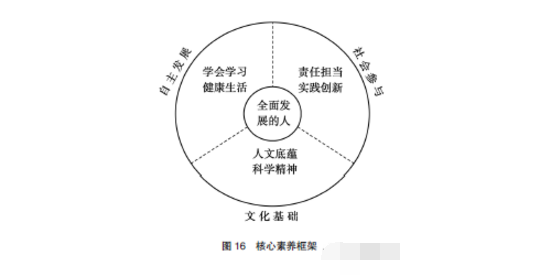
人工智能ã€å¤§æ•°æ®åˆ†æžä¸Žè™šæ‹Ÿæ•™è‚²ï¼ˆVR 教育)被称为影å“未æ¥çš„三大科技创新方å‘。未æ¥çš„虚拟现实和增强现实技术将结åˆæ›´å¤šé«˜æ–°ç§‘æŠ€å…ƒç´ å¦‚äººå·¥æ™ºèƒ½ã€äº‘计算ã€å¤§æ•°æ®å’Œç§»åŠ¨æŠ€æœ¯ç‰ï¼Œè€Œéšç€è™šæ‹ŸçŽ°å®žå’Œå¢žå¼ºçŽ°å®žæŠ€æœ¯çš„å‘展,其在教育领域的å‘展å‰æ™¯ä¹Ÿå°†ä¼šè¶Šæ¥è¶Šå¹¿é˜”。虚拟现实和增强现实å¦ä¹ 环境带给我们的ä¸ä»…仅是一个技术平å°æˆ–工具,更会å•è‚²å‡ºä¸€ç§æ–°åž‹çš„æ•™å¦æ¨¡å¼å’Œæ•™å¦æ–¹æ³•ã€‚å°†è™šæ‹ŸçŽ°å®žå’Œå¢žå¼ºçŽ°å®žæŠ€æœ¯å¹¿æ³›åœ°åº”ç”¨åˆ°è¯¾å ‚æ•™å¦ä¸ï¼Œå¯¹äºŽè´¯å½»è½å®žæ•™è‚²éƒ¨å…³äºŽâ€œå‘展未æ¥å¦æ ¡â€å’Œâ€œæ™ºæ…§è¯¾å ‚改é©â€çš„设想有é‡å¤§æ„义。虚拟现实和增强现实技术能够将虚拟对象与真实环境相èžåˆï¼Œé€šè¿‡å…¶è¾ƒå¼ºçš„交互性能给å¦ç”Ÿå¸¦æ¥æ›´å¤šçš„å¦ä¹ ä¹è¶£ï¼Œ 并为å¦ç”Ÿæ供一ç§æ–°çš„å¦ä¹ 媒体和å¦ä¹ 体验,促使å¦ç”Ÿåœ¨æ„‰æ‚¦çš„状æ€ä¸‹è¿›è¡Œç§»åŠ¨å¦ä¹ ã€è‡ªä¸»å¦ä¹ ã€é¡¹ç›®å¦ä¹ 和创客å¦ä¹ 。ä¾æ‰˜è™šæ‹ŸçŽ°å®žå’Œå¢žå¼ºçŽ°å®žæŠ€æœ¯ä¸ºåˆ›å®¢æ•™è‚²çš„载体,能让å¦ç”Ÿé€šè¿‡è‡ªä¸»æŽ¢ç©¶ã€è·¨ç•Œèžåˆã€å›¢é˜Ÿå作ã€å¼€æ‹“创新æ¥æå‡æ ¸å¿ƒç´ 养。让虚拟现实和增强现实技术与教育完美结åˆï¼Œå¿«é€Ÿèµ°è¿›ä¸å°å¦è¯¾å ‚,将为开å¯æœªæ¥æ•™è‚²åˆ›æ–°ä¹‹è·¯åšå‡ºå·¨å¤§è´¡çŒ®ã€‚
F series hot dip galvanized Ground Screw :
F series HDG ground screw with flange ,convenient connection and reliable .easy to install .
Diameter ( mm ) of Ground Screw Pile pile : 60,68,76,89,114 mm,140mm,219mm
Length of metal ground screw pile ( mm ) :800,1000,1200,1500,1600,1800,2000,2500,3000 mm or requested length
Thickness of screw pile : 2.75 mm,3.00 mm,3.75 mm,4.00 mm
Blades thickness of flange ground screw :8 mm ,6 mm ,diameter of blade :200 mm,160 mm .or other sizes
Thread size :2* 10 mm or according to clients' request
Nut aperture : 3-M 10/12/14/16/20
Surface Treatment for ground screw/helical ground screw : Hot Dip Galvanized .DIN EN ISO 1461-1999 ,Coating :average thickness more than 80 micron
Range of Application : solar energy system ,PV Mounting ,fence or garden ,timber construction ,advertising board or banner ,lighting pole,park and city building,traffic sign,beach umbrella,fencing industries &
Production chart : Cutting pipe to he standard length ,forming the pipe according to design ,welding and assemble blade,flange,nut , acid pickling ,hot dip galvanize ,QC, Packing ,shipments
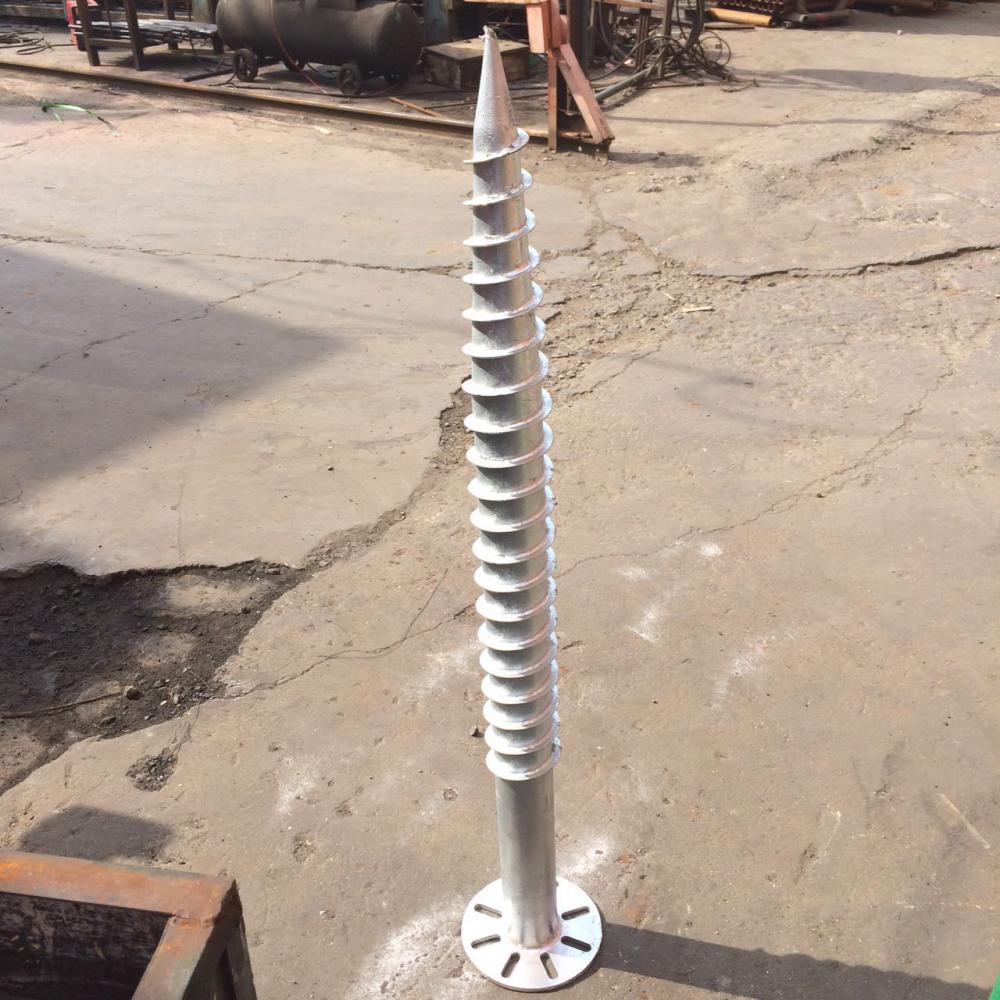

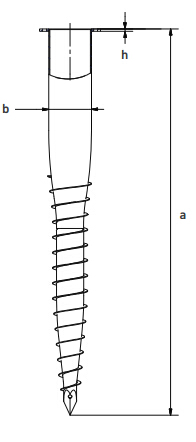
Ground Screw Pile,Ground Pile,Ground Screw Foundation,Flange Screw Pile,Ground Screws,Flange Ground Screw
BAODING JIMAOTONG IMPORT AND EXPORT CO., LTD , https://www.chinagroundscrew.com